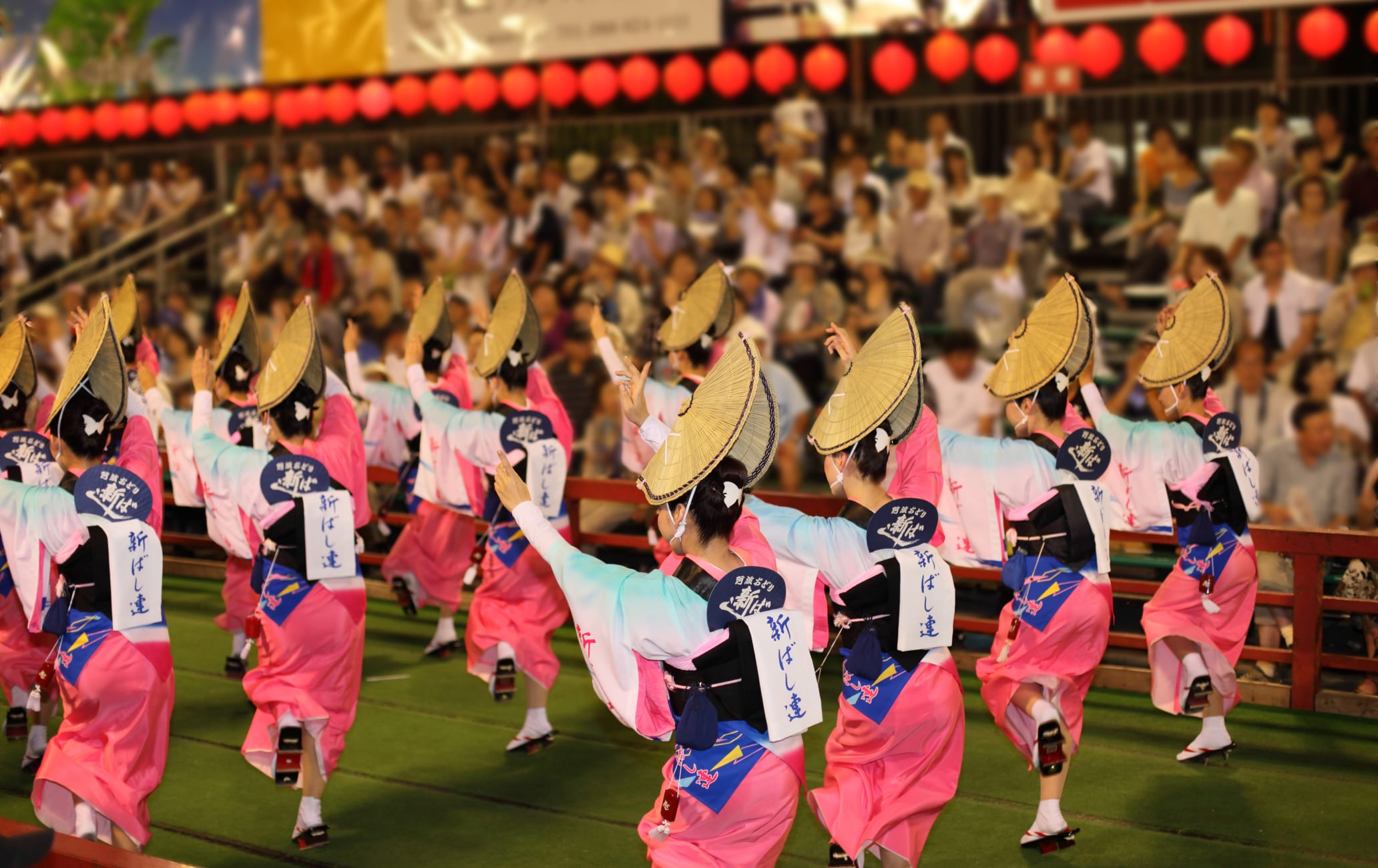Dance for days at the most famous festival in Shikoku
The Awa Odori is Tokushima's most famous festival and the subject of national attention every August when well over a million people turn out in the streets of Tokushima City to watch or participate in this traditional folk dance.
Don't Miss
- The ren group dancers performing in the evening in downtown Tokushima
- The happi and yukata; the traditional uniforms of the dancers inspired by their local heritage
- Six stages set up for dancers
How to Get There
If you are traveling to the area by airplane, you can fly from Tokyo's Haneda Airport to Tokushima.
If you are coming by rail, take the Tokaido-Sanyo Shinkansen to Okayama Station, then travel on to Tokushima Station via the JR Seto-Ohashi Kotoku Line.
Expressway bus services from Osaka Station to Tokushima Station are also available.
Quick Facts
This is one of Japan's most famous cultural events, attracting over one million people
Awa Odori dates back over 400 years
The festival is held annually from August 12 to 15
A city transformed
While Tokushima City is normally fairly quiet, the city is transformed each year from August 12 to 15 as nearly one million people—including spectators and dancers from all over Japan—gather in the downtown area for the festival. The Awa Odori dance originated here more than 400 years ago, although its popularity has spread beyond the prefecture and is performed in other areas of Japan, including Tokyo.

Dancing in the streets
During this festival, major thoroughfares are cordoned off and spectator stands are set up at various points to view the dancing. Numerous street food stalls known as yatai appear around the river areas, and the entire downtown area of Tokushima takes on the air of a lively outdoor festival, drawing comparisons with the carnival in Rio de Janeiro.
Awa Odori origin theories
There are three theories of the origins of the Awa Odori. The first theory attributes the root of the dance to a local variation of Bon-odori dancing, which is performed throughout Japan during the summer for the Obon holiday.
The second theory suggests that Awa Odori is the result of the completion and subsequent celebration of Tokushima Castle, built by Hachisuka Iemasa in 1587. Lord Hachisuka provided rice wine to the people of the castle town to mark the occasion, and they danced freely with wild abandon, regardless of rank or seniority. This eventually became the Awa Odori dance.
The third theory argues that the Awa Odori dance has roots in furyu dance. Furyu is said to be the source of Japanese Noh plays. The Awa Odori style of people dancing in a group called a ren is said to have been influenced by the furyu dance.
According to the Miyoshi district records from 1663, there was a furyu dance at Shozui Castle in 1578 held by Masayasu Sogo (a member of the Miyoshi family) and the theory holds that this is the start of the Awa Odori dance.
Tokushima City—the center of Awa-Odori
Tokushima City began promoting the festival as a tourist event during the early Showa period (1926-1989), and it got its name at this time. While Awa Odori dances take place all over the prefecture during the festival period, the Awa Odori performed in Tokushima City is the most important event.


All are welcome
To dance in the Awa Odori festival, you need to be registered as part of a ren, or a dance troupe. However, if you haven't and still want to participate, you can join the Niwaka Ren. No costume is required, and you can take a lesson from a famous dance troupe before you start.
Awa-Odori at any time
If you are unable to attend the event in the summer, you can still experience Awa Odori all year round at the Awa Odori Kaikan located in the center of the city. Dance troupes perform daytime shows, while a different, famous troupe performs every night in the evening. The ren group members are eager to teach the steps to Awa Odori, and invite visitors to perform along with them.
As an old Tokushima saying goes, “The dancing fool and the watching fool are both fools, so why not dance?”

























































